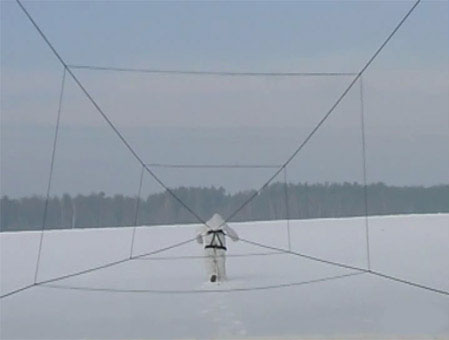
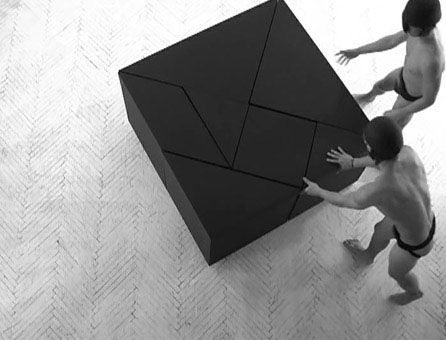
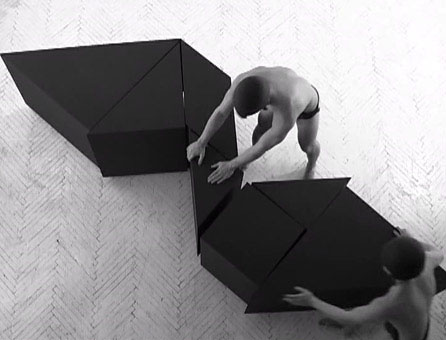
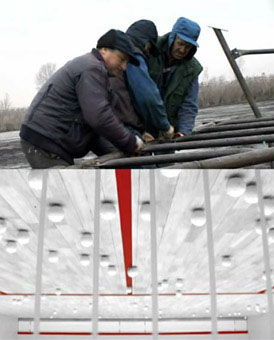
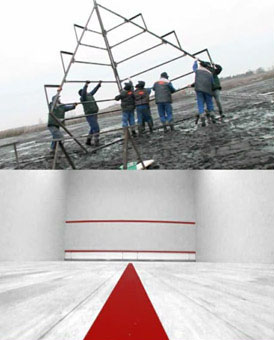
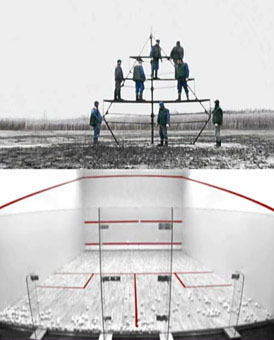






|
Molska stayed at the JCVA over May of 2009, when she toured the Jerusalem and Tel Aviv areas. She was particularly interested in the works of artist Pesach Slabosky at the Giveon Gallery, and consequently met with him several times. The dialogue between the two artists may well inspire her next project. Molska also attended a performance of Old Wives Tales at the Ensemble 209, Tel Aviv's most established performance space. During her stay, she met Curators who expressed serious interest in collaborating or showing her work in the near future.
|
| Tangram |
|
At the video's start, one of the young men claims poetry and sculpture as his pursuits. At its end, after they lie down to rest, the other declares: I want to join the Polish Army. As is often true in her work, Molska investigates iconographic images of men who are executing her commands in various territories and situations that offer echos and reworkings of other historic male images. The piece is accompanied by a complex and versatile sound track, which includes a military march sung by the Soviet Red Army Choir. Thus it conjures the Soviet control of Poland, and other 20th Century wars. Meanwhile, the march, nominally "entertainment," intermingles with a track composed and performed by artist and sound researcher Fatima Miranda, with noises that are difficult to decipher, and what sounds like the voice of a person screaming in pain. |
| F*s (Work) |
|
In contrast, the visceral and self-explanatory P=W:t (power) is shot from near ground perspective in an enclosed squash court. Painted white tennis balls (their spring damped down by the paint) are aggressively thrown every which way by an invisible arm, until the entire room fills with them. |